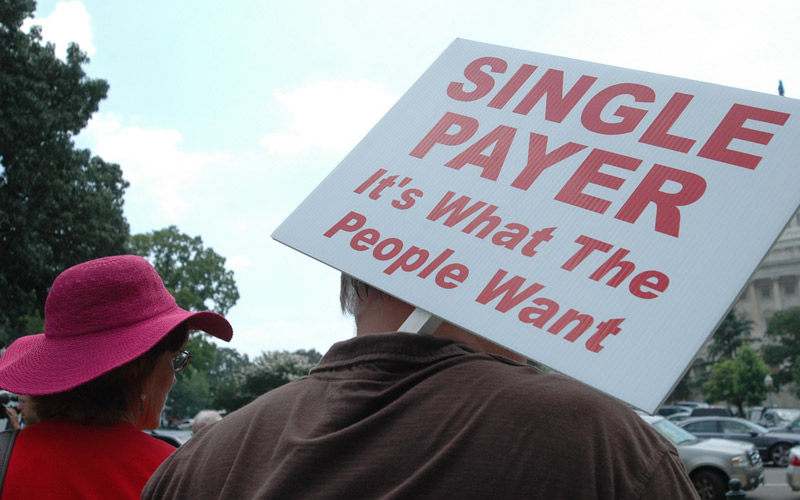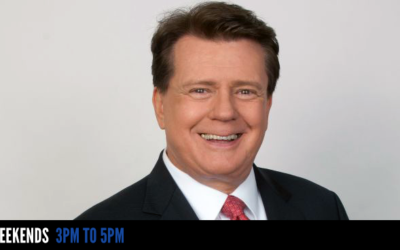Real change is coming to our health insurance system. This is inevitable for the simple reason that the system, as it stands, is not sustainable. Premiums and deductibles keep rising, way beyond the rate of inflation. Drug prices also rise, as do hospital and medical device costs.
In 2010 President Obama pushed through his landmark legislation, the Affordable Care Act (ACA), which enabled millions of previously uninsured people to get health insurance for the first time. But the model was still rooted in the same private insurance system, and dominated by the usual players: Aetna, United Health Care, Cigna and the “Blues”. So there was little reason to expect the inflationary trends to slow down.
Since Trump became president, the Republicans have been trying to dismantle the ACA—first through the legislative process. (Thankfully, Senator John McCain delivered the powerful, dramatic, and deciding “thumbs down” vote.) Since then, there have been many small cuts. The Republicans have underfunded information systems designed to assist those seeking to register for ACA plans, opened up the marketplace to short term, lower quality plans (often excluding pre-existing conditions), and weakened the individual mandate which helps to make the ACA economically feasible.
Meanwhile, the Democrats argue among themselves as to how to move forward on this fundamental but divisive issue. While there are still centrist Democrats who want to work within the framework of the ACA, to improve its efficiency, the push is to the left: a shift toward a single payer, Medicare-For-All model.
This proposal evokes extreme reactions from across the political spectrum. From the Republicans: The government will be telling you what doctor to see. There will be death panels deciding who will live or die when doling out care. This is Socialism!!
On the Democratic side, those resisting single payer, refer to various studies that show that the model is simply too expensive, and would crush state and federal budgets. They observe that it has even been rejected in the “socialist state of Vermont”: home of our most famous Socialist, Bernie.
But models are funny things. Like statistics, they can be used to confuse and obfuscate as well as to clarify and enlighten. So much depends on how you set up the design and analyze the data.
I challenge the assertions from both the left and the right. Here is my reasoning:
—We currently have a single payer health care system that works for millions of Americans: those 65 years old and over. Medicare is the largest health insurance system in the United States, with more bargaining power than any private insurer.
—Seniors pay for Medicare. They pay it forward through deductions taken out of a lifetime of paychecks. And they pay directly when they become eligible for it. The payment is determined by a formula that takes into account age and history of earning. It is a common fallacy that Medicare is totally free. So when conversations take place about implementing a “Medicare-For-All,” they are often predicated upon this false assumption.
—One of the primary drivers of cost in health care is administration. Because the Medicare system is so large, it is able to maintain relatively low administrative costs of about 4%. This stands in contrast to the private insurers, which run at approximately 12% in administrative costs. Therefore, shifting consumers from a smaller pool, higher administrative cost system into a large pool, low administrative cost system should, logically, generate lower costs.
—There are a variety of ways to design a single payer system. One is called the Public Option. This allows individuals to choose, as their health insurance provider, the federal government: the Medicare system. Instead of sending a monthly premium payment to Cigna or Aetna, the payment is withdrawn from your paycheck. Why would this well-established, functioning system, be unable to absorb new members? It will—and as the numbers grow, the system gains more power to negotiate prices with the producers/providers of care.
—Introducing the Public Option generates real competition in the insurance marketplace. Up to this point, there has been a consolidation of power in that industry, with bigger insurance companies swallowing up smaller ones. Expansion of the Medicare system would place tremendous downward pricing pressure on those private insurers.
—Americans like choice. The rallying cry from the right is that single payer will lead to poor quality care, a restriction in the choice of doctors and procedures, and long wait times. They claim that everyone will be forced into this system. This is not true. Private insurance companies can offer their own, competitive policies—or supplemental ones. People can buy into the Medicare system and purchase supplemental policies to round out whatever their government policy might not cover. It will be their choice!
Over time, it is quite possible that the majority of consumers will shift into the Medicare system. Like a powerful union, the size of its patient pool should enable this system to negotiate fair prices that will benefit all of those participating. Who could doubt that a system that is already working will work even better with increased enrollment? And who could doubt that a system like this could would be competitive with the current roster of inefficient private health insurers— companies that have failed to curb the hyper-inflationary price increases we have come to dread?
True, it will take a great deal of political will to resist the powerful lobbies that maintain a choke hold on the current system. But it is clear that, one way or another, some version of a single payer system is coming. Applying the logic above, any claim that Single Payer is economically impossible is just intellectually dishonest.
Copyright 2018 Ricky Fishman
Dr. Ricky Fishman has been a San Francisco based chiropractor since 1986. In addition to the treatment of back pain and other musculoskeletal injuries, he works as a consultant in the field of health and wellness with companies dedicated to re-visioning health care for the 21st century.
ricky@rickyfishman.com www.rickyfishman.com












